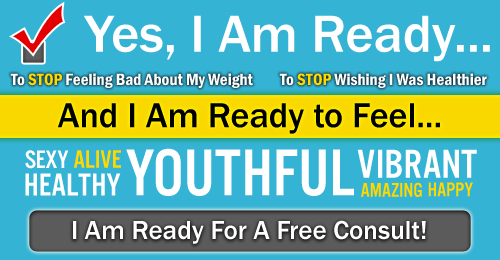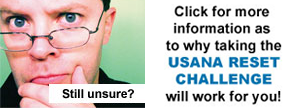Okay, let’s get real, RIGHT NOW. Seriously, how tired are you of hearing that “flexibility is good for you,” and “do it daily and you won’t believe the results……” The borage of information surrounding the fitness world can be completely confusing, so let’s keep things simple and try and create awareness as to the “why” flexibility REALLY DOES matter. 
“Flexibility is a joint’s ability to move through a full range of motion.” Did you see it? The JOINT’S ability to move. So picture this: you’re standing upright and you have a towel in hand. The towel is about 3 feet long or that similar to a yardstick. Okay, grab each end of that towel and hold the towel at chest level. Now pull the towel, up toward the ceiling, so your bicep muscles are even with your ears, KEEPNG YOUR ARMS AS STRAIGHT AS POSSIBLE. Still with me?? Okay~ continue the pull behind your head, STILL KEEPNG YOUR ARMS AS STRAIGHT AS POSSIBLE. Now notice a few things: is your chin tucking into your chest? Have your arms bent a little bit? Have your shoulders started to shrug and creep up to your ears? Are you still standing straight up or have you taken a slight forward lean (or bow)? This is a perfect picture of flexibility (or lack thereof) in certain areas of your body that is making your body act as the examples above. So what’s the point? Why should I care you say? A few reasons:
- Poor flexibility causes imbalances in your body. You did read my article, “why does everything hurt” right? Click here and read it! Why Does Everything Hurt?
- Imbalances cause pain
- Pain creates more pain other areas of the body. What’s the point of being in pain-by the way???
- Muscles become shorter, and their range of motion gets more limited.
- Did I mention things just start to hurt???
Let’s address the last bullet point above, muscles get shorter. Your muscles are fabulous! They want to work for you, they crave to work for you, and they also get mad at you! They get “mad” because with each workout you get, each mile you cycle, each step you step, each lap you swim, each pass you catch, each kitchen floor you clean, each mile you run, your muscles get tighter and tighter. The tightening is created by the force placed on the muscle. The greater the force, the greater tightness. If a muscle is continuously being tightened, there obviously is no lengthening, right? Well, a rubber band can only take so much until it tears, same with your muscles. By now you know I love to give delicious mental scenarios, so here’s another one:
You’re a runner-have been since the early years. Man, in those fabulous years of youth, unlimited energy, caution to the wind and cross country racing (even after staying up all night drinking – – yeah I said it!!), you ran like a crazed gazelle toward the finish line, crossed the tape of success and glory, stopped at In-&-Out on the way home, opted for the shake instead of the coke, showered, went out again that evening and repeated the process, and finally crashed 4 days later into one day, Saturday, to rest and recover (for about 7 hours total) and got up to engage in the ritual weekend of partying, socializing, eating and of course drinking, to wind it all up on Sunday night around 11pm where you crammed in all your homework till 2am, losing precious sleep, but who cares- you’re still young and full of life without a care in the world~ right? Your muscles, still young, fresh vibrant and flexible, didn’t need much of anything, or so you thought!
Fast forward to present time, 20 or so years later. You’re older, you are heavier, your doctor is encouraging exercise and stretching, and you remember how fabulous life was in the younger years, so you turn back to your first love, running. You plan for Saturday; you get the energy and wake up early, put on the coffee and have your oatmeal, (because after all, you ARE repeating what you did 20 years ago in hopes of finding the absolute pleasure in your effort), and hit the road. Your goal is to run for about 1.5 miles or 25 minutes, whichever comes first, and yes, you ARE giving room for the 20 years’ lapse in between. Off to a great start! You’re loving the quiet of the environment before the world wakes up, the air is still crisp and freshly polluted, (ha-ha), you’re breathing in and awakening the spirit of your prior passion, the birds are singing, all is well. You complete your first goal, the toughest one, so you find time to repeat it about 2 more times in the week. Well look at you now!! You’re not grudging the “waking up at the crack of dawn” anymore, your mileage has increased, your doctor is congratulating you on your cardio fitness, and hey- you’ve even lost a few pounds and you’re confidence is soaring! So you have built a great habit of running again, what an accomplishment! You feel like Rocky Balboa jumping out of sheer exhilaration at the top of the eight flights of stairs you doubled up on, you’re on top of the world and then …..
SOMETHING GOES SNAP, CRACKLE AND AYEE YAYYY YAYYEEE in the back of your thigh! The thing feels SO weird I mean, what is this?? It feels like your muscles have completely seized up and it will not allow you to move! You try and “walk it off” and still, no improvement. Sigh. You pulled a hamstring.

Remember the mention that your muscles get “mad” at you? They did! Our bodies have a fabulous way of keeping us grounded, they tell us when they’ve had enough, and pulled muscles, among many other things, is an indicator that the balance we thought we had, has been exceeded.
In the ensuing days, you either continue to attempt running because you don’t want to lose your groove, but you simply cannot, due to the constant pain of the pulled muscle. Frustration builds and you find solace, not much but it’s tolerable, in walking. Days go by and you’re sort of feeling better so you hit the pavement again, a slow, checking the “climate” of the hamstring trot. Feels pretty good and you’re on your way again! You repeat this another few times and 5 days later, your morning alarm goes off, you jump out of bed as normal, and you collapse on the floor, shrieking in pain. Yup, the hamstring is fully upset with you now. You go to the doctor and you’re told to stay off the leg in the running respect, apply ice and heat and stretch. STRETCH. STRETCH?? The doctor shows you one basic stretch, (standing upright, tilt forward and try and touch your toes), you mimic it right there in the office, and find you can barely get any distance at all. In fact, the sensation is so painful, why in the world would you want to continue that?? It hurts for cryin’ out loud! So …. you ignore the heed and try your luck. Meanwhile, what’s happening is you are using your opposite leg, the uninjured one, for everything else you do; you’re compensating. The entire opposite side of your body is working double time for the other half, and you’re ignoring the flexibility aspect of your recovery.
You find it’s time to hire a professional, a trainer. You are taken through an assessment, one of them being flexibility, also identified are your particular body compensations,Why Does Everything Hurt? and a workout plan is made specifically for you! You are taken through many workouts, you’re given homework including specific stretches for not only your hamstring but for the rest of your body that has fallen into the trenches of poor flexibility, and hopefully watch you, the client, recover to continue in what you love, running.

So let’s identify the issues again:
- You love running
- You got hurt running
- You were asked to back off running, you didn’t listen
- You re-injured, this time, worse
- You took a good step and asked for help
- But your body doesn’t work “right” anymore
- Now you’re working double time to recover
- Stretching is a major pain in the ass (no pun intended). It takes time, not much, but still- do you really want to do it? Most likely no, but look where you are at today.
Without flexibility your body begins to stiffen up. Notice how older folks walk with more of a “shuffle” and how their feet don’t really lift up off the ground? Notice if you are asked to sit with your legs crossed it might be hard to do? Or notice how after a shift of sitting at your desk when you stand up- oh my goodness things are stiff aren’t they? These are all signs of poor flexibility, and they can wreak havoc on your quality of life. 
In short, (VERY short), here’s what is happening to your body when you choose to ignore flexibility as an integral part of your being and lifestyle:
To keep it simple, we change to something like the Tin Man, needing more “oil” to keep our joints moving well. There is the choice of moving, or moving well. You are completely in charge of the quality of life you have and want.
It is never too late to begin, resume or enhance your goals of fitness. If you are one completely turned off by initiating flexibility training into your lifestyle, you’re not alone. You may be so extremely tight that there’s no way you can stretch- – by yourself! There is also flexibility training that can be viewed as personal training, it’s called “assisted” stretching. This is where the trainer actively stretches you FOR you, and it looks like this: 
There are different kinds of stretching involved, and it DOES make your muscles lengthen! I must get stretched soon- it’s always nicer when done for me!
Bottom line, like everything else, you choose and define what is important to you. Flexibility can make or break your body’s ability to perform for you in daily activities or in greater intensities of athleticism. It will benefit you weekend warriors like you wouldn’t believe, and if you’re looking to feel better just because you can, flexibility training can be a beneficial ticket! FLEXIBILITY ALLOWS AND HEIGHTENS PAIN-FREE MOVEMENT AND LIVING. It is a hope that that ONE idea is enough to bolster the desire within you to feel better! Would you like to experience a session of assisted stretching? I’d LOVE to work with you! We can utilize a 30 minute or 60 minute session. It WILL change how you feel! Even the kitties dig it!
 References 1. National Skeletal Muscle Research Center, San Diego, CA, May, 2006.
References 1. National Skeletal Muscle Research Center, San Diego, CA, May, 2006.






This page truly has all the information and facts I
wanted concerning this subject and didn’t know who to ask.